-
 Bitcoin
Bitcoin $116400
-1.69% -
 Ethereum
Ethereum $3731
2.87% -
 XRP
XRP $3.119
-1.00% -
 Tether USDt
Tether USDt $1.000
-0.04% -
 BNB
BNB $774.0
1.01% -
 Solana
Solana $181.0
-2.25% -
 USDC
USDC $1.000
0.02% -
 Dogecoin
Dogecoin $0.2314
-2.16% -
 TRON
TRON $0.3145
1.76% -
 Cardano
Cardano $0.8087
0.22% -
 Hyperliquid
Hyperliquid $43.01
0.68% -
 Stellar
Stellar $0.4247
-0.93% -
 Sui
Sui $3.758
1.42% -
 Chainlink
Chainlink $18.30
1.99% -
 Bitcoin Cash
Bitcoin Cash $551.4
5.66% -
 Hedera
Hedera $0.2482
3.08% -
 Avalanche
Avalanche $23.70
0.18% -
 Litecoin
Litecoin $115.1
2.44% -
 UNUS SED LEO
UNUS SED LEO $8.972
-0.36% -
 Shiba Inu
Shiba Inu $0.00001370
0.73% -
 Toncoin
Toncoin $3.146
0.74% -
 Ethena USDe
Ethena USDe $1.001
-0.03% -
 Uniswap
Uniswap $10.49
3.95% -
 Polkadot
Polkadot $4.044
1.42% -
 Monero
Monero $328.9
2.43% -
 Dai
Dai $0.9998
-0.03% -
 Bitget Token
Bitget Token $4.510
-1.10% -
 Pepe
Pepe $0.00001231
-1.68% -
 Aave
Aave $293.4
2.16% -
 Cronos
Cronos $0.1294
2.89%
How to calculate the upper and lower BOLL tracks? Is it more appropriate to choose 2 or 1.5 as the standard deviation multiple?
Bollinger Bands, developed by John Bollinger, help traders assess crypto volatility using a middle band (SMA) and outer bands based on standard deviation.
May 22, 2025 at 11:43 am
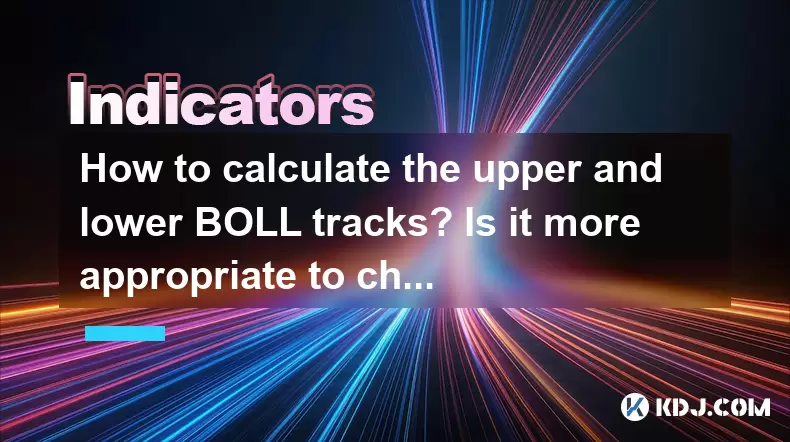
Introduction to Bollinger Bands
Bollinger Bands, commonly known as BOLL, are a popular technical analysis tool used by traders in the cryptocurrency market. Developed by John Bollinger, these bands help traders assess the volatility and potential price movements of an asset. The BOLL consists of a middle band, which is typically a simple moving average (SMA), and two outer bands that are calculated based on the standard deviation of the price from the middle band. The key components of Bollinger Bands are the upper band, middle band, and lower band. This article will delve into how to calculate the upper and lower BOLL tracks and discuss whether it is more appropriate to use 2 or 1.5 as the standard deviation multiple.
Calculating the Middle Band
The middle band of the Bollinger Bands is the foundation upon which the upper and lower bands are built. It is usually calculated using a simple moving average (SMA) of the asset's price over a specified period. For instance, if you are using a 20-day period, the middle band would be the average of the closing prices of the last 20 days.
- Select the period: Decide on the number of periods you want to use. Common choices include 20, 50, or 100 days.
- Calculate the SMA: Sum the closing prices of the asset over the selected period and divide by the number of periods.
For example, if the closing prices over the last 20 days are $100, $101, $102, ..., $120, the middle band would be calculated as follows:
[
\text{Middle Band} = \frac{100 + 101 + 102 + ... + 120}{20}
]
Calculating the Standard Deviation
The standard deviation is a crucial element in determining the width of the Bollinger Bands. It measures the dispersion of the asset's price from the middle band. To calculate the standard deviation, follow these steps:
- Calculate the mean: This is the same as the middle band, the SMA of the closing prices.
- Calculate the deviation from the mean: Subtract the mean from each closing price.
- Square the deviations: Square each of the deviations.
- Calculate the average of the squared deviations: Sum the squared deviations and divide by the number of periods.
- Take the square root: The standard deviation is the square root of the average of the squared deviations.
For the same example of 20 days with closing prices from $100 to $120, the standard deviation calculation would look like this:
[
\text{Mean} = \frac{100 + 101 + 102 + ... + 120}{20}
]
[
\text{Deviation}_1 = 100 - \text{Mean}, \text{Deviation}2 = 101 - \text{Mean}, ..., \text{Deviation}{20} = 120 - \text{Mean}
]
[
\text{Squared Deviation}_1 = (\text{Deviation}_1)^2, \text{Squared Deviation}_2 = (\text{Deviation}2)^2, ..., \text{Squared Deviation}{20} = (\text{Deviation}_{20})^2
]
[
\text{Average of Squared Deviations} = \frac{\text{Squared Deviation}_1 + \text{Squared Deviation}2 + ... + \text{Squared Deviation}{20}}{20}
]
[
\text{Standard Deviation} = \sqrt{\text{Average of Squared Deviations}}
]
Calculating the Upper and Lower Bands
Once you have the middle band and the standard deviation, you can calculate the upper and lower bands. The upper band is calculated by adding a multiple of the standard deviation to the middle band, while the lower band is calculated by subtracting the same multiple from the middle band.
- Upper Band: Middle Band + (Standard Deviation x Multiple)
- Lower Band: Middle Band - (Standard Deviation x Multiple)
The most commonly used multiple is 2, but some traders prefer to use 1.5 or other values. Using the example above, if the middle band is calculated as $110 and the standard deviation is $5, the upper and lower bands with a multiple of 2 would be:
[
\text{Upper Band} = 110 + (5 \times 2) = 120
]
[
\text{Lower Band} = 110 - (5 \times 2) = 100
]
If you use a multiple of 1.5, the calculations would be:
[
\text{Upper Band} = 110 + (5 \times 1.5) = 117.5
]
[
\text{Lower Band} = 110 - (5 \times 1.5) = 102.5
]
Choosing Between 2 and 1.5 as the Standard Deviation Multiple
The choice between using a standard deviation multiple of 2 or 1.5 depends on your trading strategy and the level of sensitivity you want the Bollinger Bands to have. A multiple of 2 will result in wider bands, which means fewer signals but potentially more significant moves when the price breaks out of the bands. A multiple of 1.5 will result in narrower bands, providing more signals but potentially more false positives.
- Using a multiple of 2: This is the standard setting and is preferred by many traders because it captures a larger range of price movements. It is particularly useful for identifying strong trends and significant reversals.
- Using a multiple of 1.5: This setting makes the bands more sensitive to price changes and can be beneficial for traders who want to catch smaller price movements. However, it may lead to more frequent but less reliable signals.
Practical Application of Bollinger Bands in Cryptocurrency Trading
In the context of cryptocurrency trading, Bollinger Bands can be used to identify potential buy and sell signals. When the price touches or crosses the upper band, it may indicate that the asset is overbought, and a potential sell signal could be considered. Conversely, when the price touches or crosses the lower band, it may indicate that the asset is oversold, and a potential buy signal could be considered.
- Identify overbought and oversold conditions: Use the upper and lower bands to determine when the price is deviating significantly from the mean.
- Look for price breakouts: When the price breaks out of the upper or lower band, it may signal the beginning of a new trend.
- Combine with other indicators: Bollinger Bands are often used in conjunction with other technical indicators, such as the Relative Strength Index (RSI) or Moving Average Convergence Divergence (MACD), to confirm signals.
Frequently Asked Questions
Q1: Can Bollinger Bands be used for all cryptocurrencies?
A1: Yes, Bollinger Bands can be applied to any cryptocurrency. However, the effectiveness may vary depending on the liquidity and volatility of the specific cryptocurrency. More liquid and less volatile assets tend to produce more reliable signals.
Q2: How often should I recalculate the Bollinger Bands?
A2: Bollinger Bands should be recalculated with each new data point, typically at the end of each trading period (e.g., daily, hourly, etc.). This ensures that the bands remain current and reflective of the most recent price movements.
Q3: Are there any other settings for the Bollinger Bands that I should consider?
A3: Yes, besides the standard deviation multiple, you can also adjust the period used for the moving average. Shorter periods (e.g., 10 days) will make the bands more sensitive to price changes, while longer periods (e.g., 50 days) will make them less sensitive. Experimenting with different settings can help you find the best configuration for your trading strategy.
Q4: Can Bollinger Bands be used for long-term investing in cryptocurrencies?
A4: While Bollinger Bands are typically used for shorter-term trading, they can also be applied to longer-term investing. Using a longer period for the moving average and adjusting the standard deviation multiple can help identify longer-term trends and potential entry or exit points for long-term investments.
Disclaimer:info@kdj.com
The information provided is not trading advice. kdj.com does not assume any responsibility for any investments made based on the information provided in this article. Cryptocurrencies are highly volatile and it is highly recommended that you invest with caution after thorough research!
If you believe that the content used on this website infringes your copyright, please contact us immediately (info@kdj.com) and we will delete it promptly.
- Pump, Bonk, Buyback: A Wild Ride in Crypto Town!
- 2025-07-25 19:10:12
- Punisher Coin, Dogecoin, Shiba Inu: Meme Coin Mania in the 2025 Crypto Landscape
- 2025-07-25 19:10:12
- Celestia's Token Control: Buyback & Staking Overhaul in Focus
- 2025-07-25 19:50:11
- Altcoins, Bitcoin, and Crypto Coins: What's Hot in the NYC Crypto Scene?
- 2025-07-25 19:55:52
- Litecoin Price Breakout Imminent? Rally Potential Explored!
- 2025-07-25 17:30:12
- Ether ETFs Surge, Bitcoin Wobbles: Is an ETH Breakout Imminent?
- 2025-07-25 16:50:12
Related knowledge

How to interpret that the KDJ D line is downward for a long time but the price is sideways?
Jul 25,2025 at 07:00pm
Understanding the KDJ Indicator and Its ComponentsThe KDJ indicator is a momentum oscillator widely used in cryptocurrency trading to assess overbough...

What does it mean that the KDJ indicator forms a double bottom at a low level?
Jul 25,2025 at 05:08pm
Understanding the KDJ Indicator in Cryptocurrency TradingThe KDJ indicator is a momentum oscillator widely used in cryptocurrency trading to identify ...
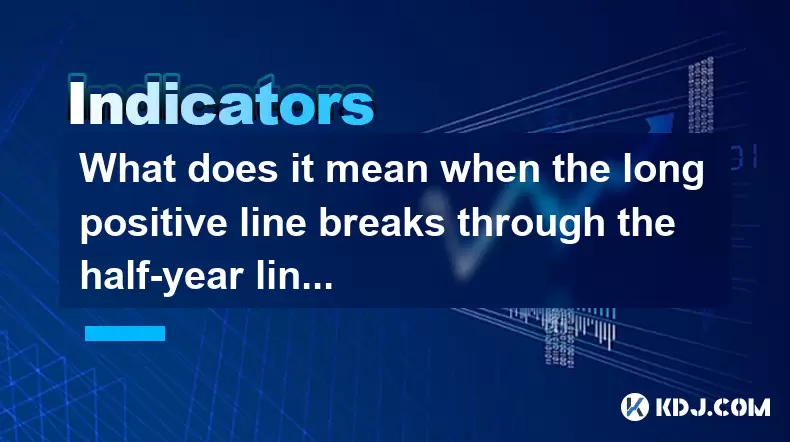
What does it mean when the long positive line breaks through the half-year line and then steps back?
Jul 25,2025 at 06:49pm
Understanding the Long Positive Line in Candlestick ChartsIn the world of cryptocurrency trading, candlestick patterns play a vital role in technical ...
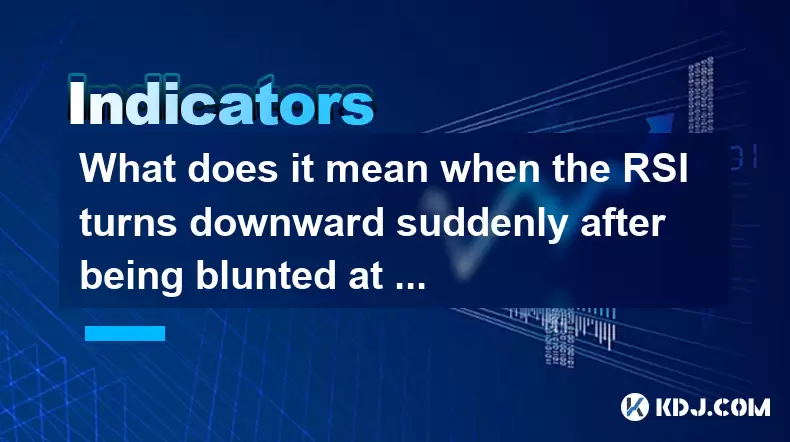
What does it mean when the RSI turns downward suddenly after being blunted at a high level?
Jul 25,2025 at 04:00pm
Understanding the RSI and Its Role in Technical AnalysisThe Relative Strength Index (RSI) is a momentum oscillator that measures the speed and change ...
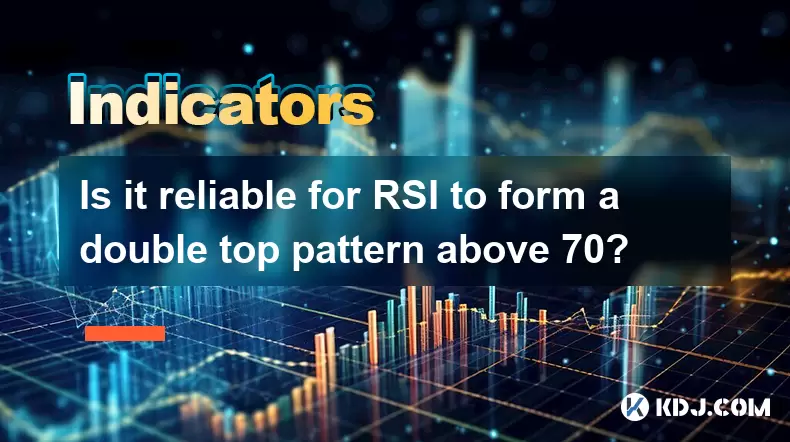
Is it reliable for RSI to form a double top pattern above 70?
Jul 25,2025 at 04:49pm
Understanding the RSI Indicator and Its Role in Technical AnalysisThe Relative Strength Index (RSI) is a momentum oscillator that measures the speed a...
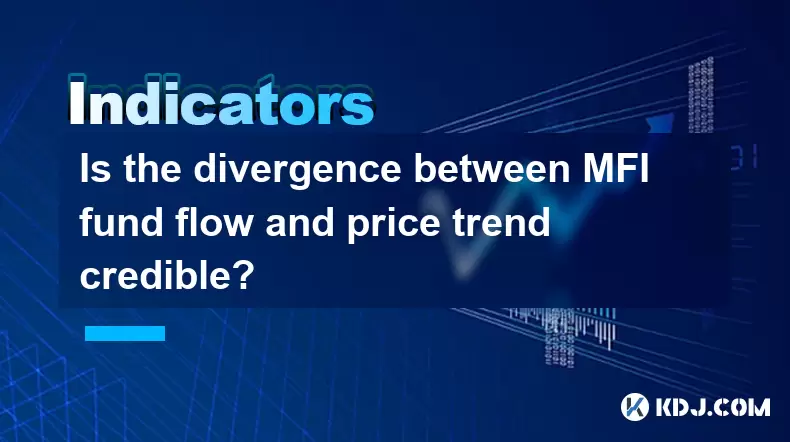
Is the divergence between MFI fund flow and price trend credible?
Jul 25,2025 at 12:01pm
Understanding MFI and Fund Flow in Cryptocurrency MarketsThe Money Flow Index (MFI) is a technical oscillator that combines price and volume to assess...

How to interpret that the KDJ D line is downward for a long time but the price is sideways?
Jul 25,2025 at 07:00pm
Understanding the KDJ Indicator and Its ComponentsThe KDJ indicator is a momentum oscillator widely used in cryptocurrency trading to assess overbough...

What does it mean that the KDJ indicator forms a double bottom at a low level?
Jul 25,2025 at 05:08pm
Understanding the KDJ Indicator in Cryptocurrency TradingThe KDJ indicator is a momentum oscillator widely used in cryptocurrency trading to identify ...

What does it mean when the long positive line breaks through the half-year line and then steps back?
Jul 25,2025 at 06:49pm
Understanding the Long Positive Line in Candlestick ChartsIn the world of cryptocurrency trading, candlestick patterns play a vital role in technical ...

What does it mean when the RSI turns downward suddenly after being blunted at a high level?
Jul 25,2025 at 04:00pm
Understanding the RSI and Its Role in Technical AnalysisThe Relative Strength Index (RSI) is a momentum oscillator that measures the speed and change ...

Is it reliable for RSI to form a double top pattern above 70?
Jul 25,2025 at 04:49pm
Understanding the RSI Indicator and Its Role in Technical AnalysisThe Relative Strength Index (RSI) is a momentum oscillator that measures the speed a...

Is the divergence between MFI fund flow and price trend credible?
Jul 25,2025 at 12:01pm
Understanding MFI and Fund Flow in Cryptocurrency MarketsThe Money Flow Index (MFI) is a technical oscillator that combines price and volume to assess...
See all articles

























































































